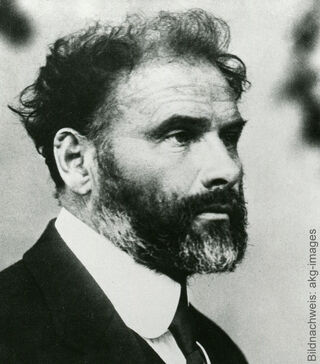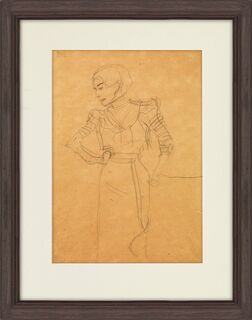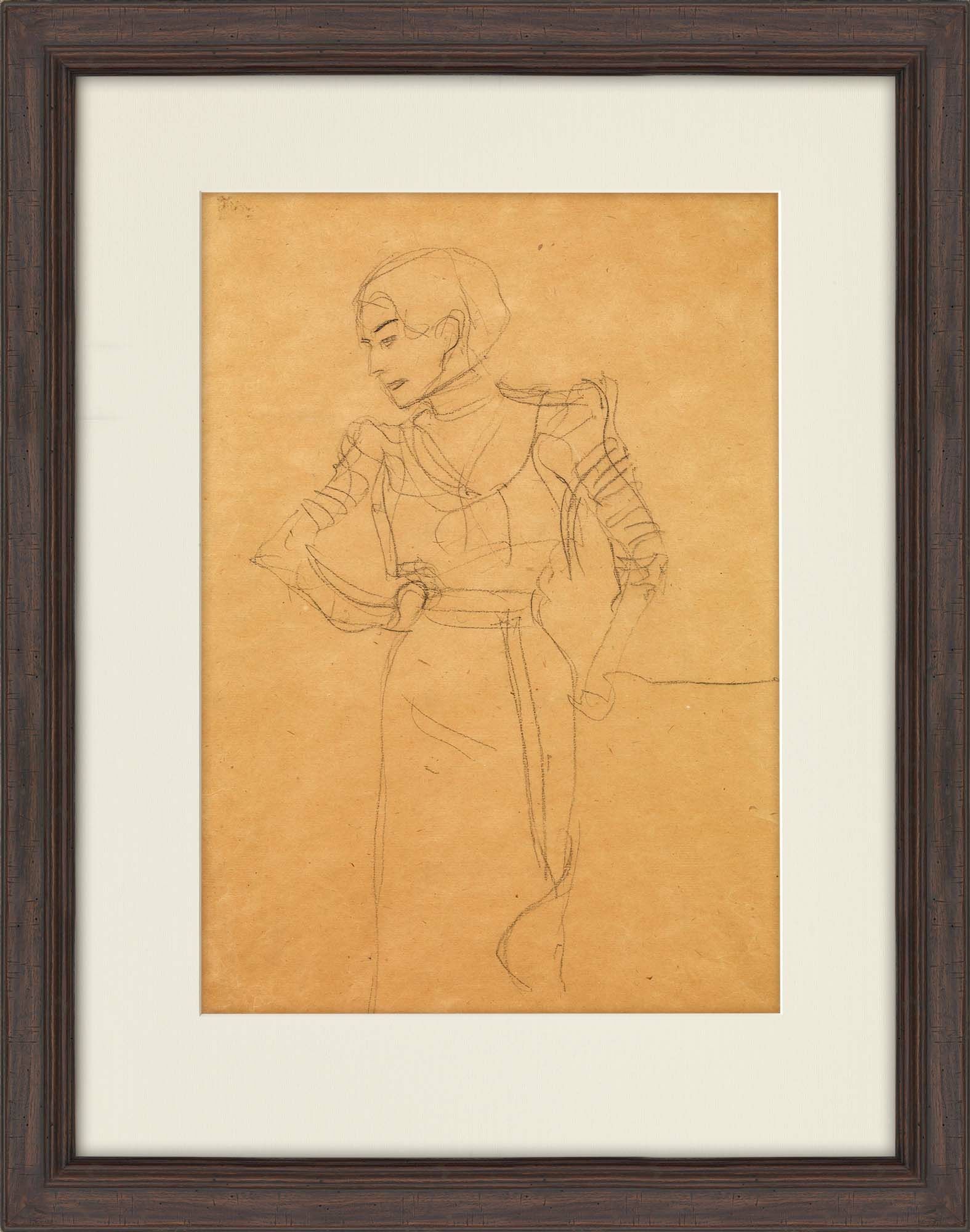Picture "Figure Standing in Profile by Armchair" (around 1900) (Unique piece)


Picture "Figure Standing in Profile by Armchair" (around 1900) (Unique piece)
Quick info
unique piece | stamped | pencil on paper | framed | size 74 x 60 cm
Detailed description
Picture "Figure Standing in Profile by Armchair" (around 1900) (Unique piece)
The central theme in Gustav Klimt's work was the female body, with all its sensuality. Female depictions are often characterised by a frank eroticism. We can offer you here exclusively one of the rarely available hand drawings. The attractiveness of the work is further enhanced by the fact that there are other pencil studies by the Symbolist artist on the back of the sheet.
Pencil drawing on thin paper, ca. 1900. Stamped on the back and with three further pencil studies. Motif size/sheet size 45 x 31.5 cm. Size in frame 74 x 60 cm as shown.

About Gustav Klimt
1862-1918, Austrian painter, a famous representative of Viennese Art Nouveau
Gustav Klimt (1862-1918) was already a renowned artist, influencing the Art Nouveau style of Vienna's famous Ringstrasse with his murals and co-founding the Vienna Secession, when he created his "Golden Style". Inspired by the Byzantine mosaics, he inserted ornamental colour surfaces into a golden bed just like encased gemstones. With his visual art, Klimt describes the path of life of human beings who, negatively influenced by instincts, find their redemption in the kiss. The depictions of the body convey a subtle eroticism, although their figures dissolve into ornamental and geometric colour surfaces. He utilized this method not only for his depictions of couples but also for his portraits of rich women and landscape paintings. This two-dimensional style is today the epitome of Klimt's intensely coloured art, which, however, only characterises his work from 1905 onwards.
Klimt was not only adept at gold and opulence but was also a brilliant draughtsman. He produced numerous drawings in the course of his life. Mostly as preliminary studies for larger works.
As a son of an engraver, Klimt learned his craft at Vienna‘s School of Applied Arts. While still seeking to find his own artistic style, his early work is based on historicism especially influenced by Hans Makart, the artist Prince of the Habsburg monarchy in the late 19th century. Together with his brother Ernst and Franz Matsch, the three young painters formed an artistic community and received numerous commissions to design new buildings on Vienna's Ringstrasse. The staircases of Vienna's Burgtheater or the Museum of Fine Arts bear witness to the historicist style of this collaborative team.
In the late 1890s, like so many young and open-minded artists of the fin de siècle, Gustav Klimt abandoned the academic tradition. In 1897, together with other artists, he founded the "Wiener Secession", which he presided over as president until his resignation in 1905. To this day, the Secession's exhibition building remains a place and temple for new young art.
A one-of-a-kind or unique piece is a work of art that has been personally created by the artist. It exists only once due to the type of production (oil painting, watercolours, drawing, etc.).
In addition to the classic unique pieces, there exist the so-called "serial unique pieces". They present a series of works with the same colour, motif and technique, manually prepared by the same artist. The serial unique pieces are rooted in "serial art", a type of modern art, that aims to create an aesthetic effect through series, repetitions and variations of the same objects or themes or a system of constant and variable elements or principles.
In the history of arts, the starting point of this trend was the work "Les Meules" (1890/1891) by Claude Monet, in which for the first time a series was created that went beyond a mere group of works. The other artists, who addressed to the serial art, include Claude Monet, Piet Mondrian and above all Gerhard Richter.


